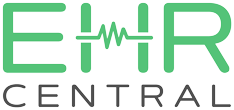How To Roll Out & Implement A New EHR For Your Practice?
If you’re still running your practice using papers and suddenly decided to shift to electronic health records then it could be a difficult time for you. Particularly this shift involves potential risks if the process isn’t done the right way. Therefore, healthcare organizations should thoughtfully implement new EHR software in their practice and carefully consider what it entails and how to go about it in a manner that positions them best for success.

What Is EHR Implementation?
An EHR implementation is the process of planning and proceeding with the integration of EHR software and related components in a healthcare organization. Implementation refers to the integration of any software-based service or component into the workflow of an organizational structure or an individual end-user.
Particularly, an EHR software system implementation is an organization-wide effort to shift the clinical paperwork to any reliable EHR software system that directly impacts the physicians, and administrative staff all the way to the patients.
How EHRCentral enhances your healthcare practice?
How Long Does It Take To Implement A New EHR Software System?
The time taken to implement a new EHR system depends on the context. The time required to implement and run an EHR system in a healthcare practice typically depends upon different variables. Therefore, its impossible to forecast how long it takes to implement a new EHR.
However, a healthcare provider can eliminate the uncertainty of time by consulting with experts. It helps them automate their business operations with useful insights and professional guidance.
What are EHR Implementation Steps?
Moving beyond the typical roadmap or checklist provided here, it’s important to make sure that the essential steps involved in the EHR implementation process are completed the right way. I have listed down the fundamental steps to be followed for EHR implementation in a more detailed fashion.
Step 1: Selection Of Team
It is important to make sure that you have a full-fledged IT team who have expertise in EHR implementation, maintenance and operations. So they can carry out the workload and help you automate your business operations.
Step 2: Collect Requirements
Before implementing any EHR system, healthcare providers should gather the requirements of their practice in order to determine what features and functionality of an EHR they require to automate their business.
Step 3: RFI and RFP
Once you have listed down the requirements then you should select a team who will research potential EHR vendors in the USA. After conducting thorough research they should submit Requests for Information (RFI) and Request for Proposals (RFP) to prospective vendors.
Step 4: Evaluate RFI and RFP Responses
After receiving RFIs and RFPs from the prospective EHR vendors, the selection team will be responsible to evaluate these responses based on how well they fulfill your requirements.
Step 5: Shortlist The EHR Vendors
With the help of their selection team, healthcare practitioners then rank the EHR vendors to create a shortlist. In this way, they can narrow down a list of 3 to 4 finalists who will then provide them with a demo of their EHR software.
Step 6: Get Demonstrations From Vendors
In this step, practitioners should request demonstrations from their shortlisted EHR vendors. These vendors will conduct demonstrations using presentations and stimulations of their product to the practitioner’s selection team. The selection team will then have the opportunity to learn more details about the product and ask questions to the EHR vendors related to their product, pricing, reliability, etc.
Step 7: Selection Of The EHR Software
After a healthcare provider figures out that an EHR vendor meets their requirements then they should proceed with the selection of a vendor. After that, they should negotiate the contract and move ahead to actually implement the EHR system.
Step 8: Planning & Go-Live Preparation
With the help of the vendor selection team and other representatives from the vendor, healthcare providers should plan out how the software and compatible hardware will be deployed.
Also, healthcare providers should plan out how they’ll train their office staff to adopt a new system to consolidate their workflow. At this time, healthcare providers estimate how long it takes to prepare their team, upgrade their resources and deploy a compatible IT setup for the implementation of a new EHR system.
Using this 8-step checklist of EHR implementation can help you successfully deploy a reliable system for business setup. It will also help your team to accept the changes and educate themselves on how to automate your business operations using the new EHR system.
Looking for a reliable EHR vendor in the USA? m-Hospital is a country-wide network of reliable healthcare providers that are also offering HIPAA-compliant and well-encrypted EHR Solutions i.e. EHRCENTRAL. This solution automates your business operations from patient data collection to medical billing solutions and much more. Request your free demo now!
For more information;
Send us an email: info@ehrcentral.com
Give us a call: +1 (833) 646-7748





